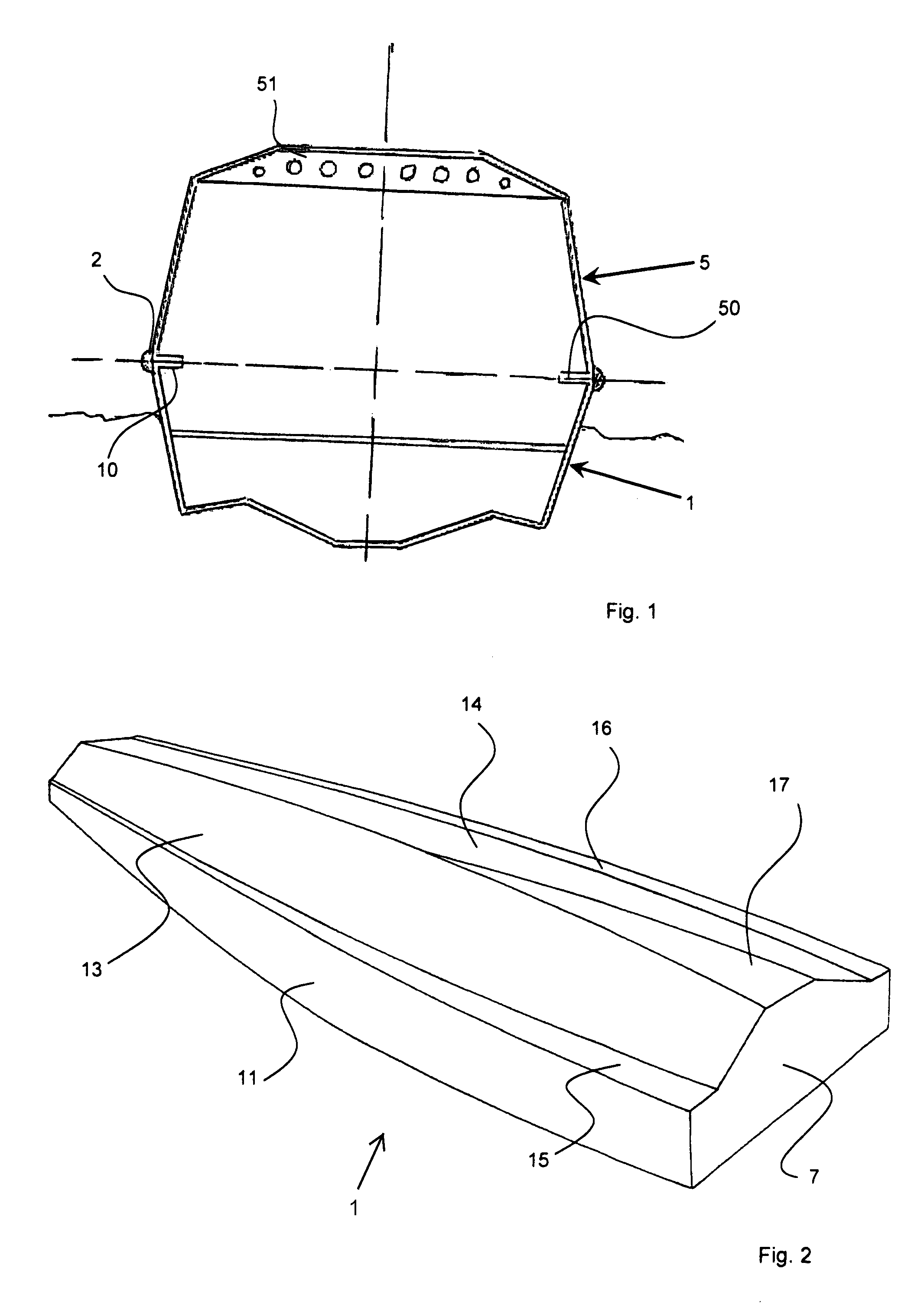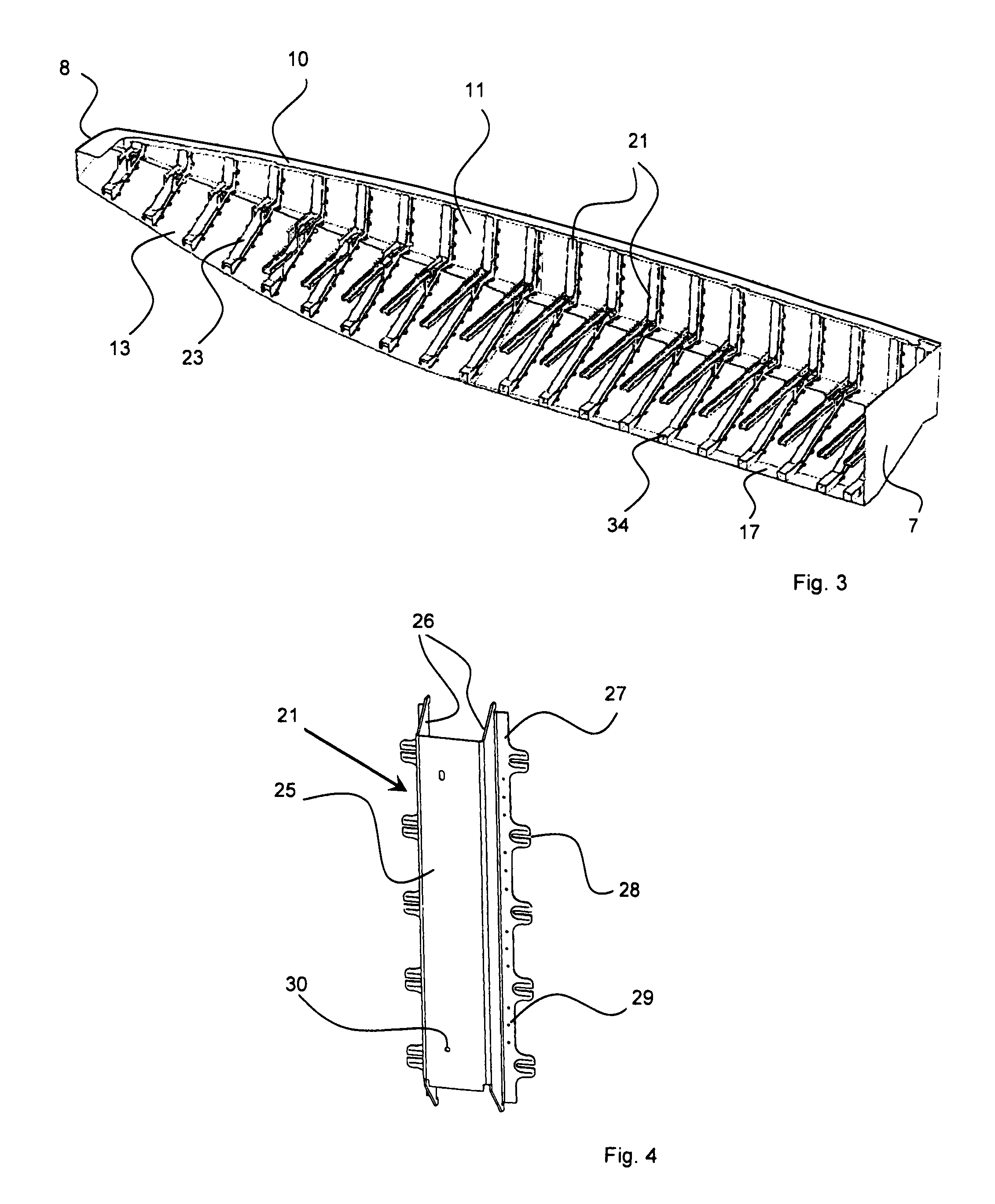Boat or Ship Body of Aluminum-Based Material
a technology of aluminum-based materials and boats, applied in the field of boats or ships, can solve the problems of warping and displacement of components from the required contours and positions, affecting the structural strength and rigidity of the frame, and requiring considerable expense and effort, so as to facilitate the proper placement of the frame elements, minimize or avoid warping or other undesired deformation, and achieve the effect of necessary structural strength and rigidity
- Summary
- Abstract
- Description
- Claims
- Application Information
AI Technical Summary
Benefits of technology
Problems solved by technology
Method used
Image
Examples
Embodiment Construction
[0031]As shown in the vertical sectional view of FIG. 1, a watercraft body (e.g. a ship body or boat body) according to the invention includes a bottom hull 1 as well as a superstructure, topside structure or upper structure 5 that is fabricated as a separate unit relative to the hull 1, and is then mounted on and connected to the hull 1. Particularly, the hull 1 and the superstructure 5 are connected to one another by a flange connection of two identical flange plates 10 and 50 that are connected together, for example by screwing, bolting, pinning, riveting, welding, and / or adhesive bonding. The perimeter flange plate 10 is a component of the hull 1, and the perimeter flange plate 50 is a component of the superstructure 5. These flange plates 10 and 50 serve as a shape-defining element for the hull 1 or for the superstructure 5 respectively during the fabrication of those structures. Furthermore, after the flange plates 10 and 50 are joined together, they also form a reinforced per...
PUM
| Property | Measurement | Unit |
|---|---|---|
| Length | aaaaa | aaaaa |
| Shape | aaaaa | aaaaa |
| Perimeter | aaaaa | aaaaa |
Abstract
Description
Claims
Application Information
 Login to View More
Login to View More - R&D
- Intellectual Property
- Life Sciences
- Materials
- Tech Scout
- Unparalleled Data Quality
- Higher Quality Content
- 60% Fewer Hallucinations
Browse by: Latest US Patents, China's latest patents, Technical Efficacy Thesaurus, Application Domain, Technology Topic, Popular Technical Reports.
© 2025 PatSnap. All rights reserved.Legal|Privacy policy|Modern Slavery Act Transparency Statement|Sitemap|About US| Contact US: help@patsnap.com



